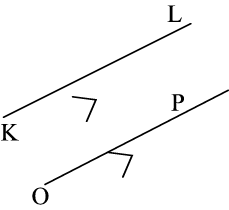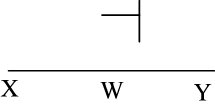| << Chapter < Page | Chapter >> Page > |
1. General discussion about geometry.
2. (1) EARTH (geo)
(2) MEASUREMENT (metry)
4. (a) a point
(b) angle
(c) figures
6. (a) construction line
(b) drawing line
(c) a broken line
7.1 (a) horizontal
vertical
diagonal
(b) parallel
⁄ ⁄
(c) perpendicular
right
┴
8 (a) 6
AB; AD; BC; CD; AC; BD
BD: 40 mm
(b) HJ; JH; IJ; IH

(c)
(d)

(e)


(f)


1. Let us begin with a class discussion. What, do you think, is GEOMETRY all about?
2. Did you know?
Geometry is derived from two Greek words? Decipher the code and find out what the two words are.
1.
a) 72 ÷ 8
b) 7 x 6
c) 9 x 4
d) 9 x 6
e) 144 ÷ 12
________________
(geo)
2.
a) 12 x 8
b) 36 ÷ 4
c) 29 + 13
d) 56 − 18
e) 11 x 4
f) 12 x 3
_________________
(metry)

3. Did you know?
More than 5 000 years ago, the Ancient Egyptians in the Nile Valley applies geometrical rules to build their pyramids. The Babylonians also used geometry to build their temples and to develop their irrigation systems. The famous Greek geometrician, Euclid, lived 300 B.C. According to him, the foundations of geometry are points, lines and planes.
4. BRAIN TEASER!
a) What is the shortest possible line?___________________________________
b) What do we get when we join two lines together so that they bisect each other? ______________________________________________________________
c) What do we get when we add more lines to b?_________________________
5. IMPORTANT FACTS to KNOW
POINT: A point only has a position and no size.
We indicate it with a small dot ( Ÿ ).
LINE: When we have two points, we can draw a line through them.
A line only has length and neither breadth nor height
A straight line has no beginning or end.

LINE SEGMENT: A line segment is part of a line. It has a starting point and an end point.

RAY: A ray has a beginning point. It continues indefinitely in the same direction and doesn’t have an end point. (Think of the rays of the sun.)

PLANE: A plane has length and breadth (two-dimensional), but not height. You can perceive it as a “flat” space, e.g. a rectangle.

6. BRAIN-TEASER!
a) What do we call this line? . . . . . . . . . . . . . . . . .
It is used when we are constructing a figure.
_____________________________________________________________________
b) What do we call this line? _____________________
It is usually dark and is used for the final lines of a drawing.
_____________________________________________________________________
c) This line is used for hidden or invisible lines. _ _ _ _ _ _ _
(it is not a dotted line)
_____________________________________________________________________
7.1 Do you still remember?
§ Can you fill in the missing answers?
a) Kinds of lines: Lines can be:

ii)

:
iii)

b) Lines that are equidistant from each other and never meet are called
_________________________________________________________ lines.
We use the symbol _________________to show the lines “are parallel to each other.”
c) Two lines are ______________________________ to each other when they bisect each other, forming a 90° angle.
We call this angle a _______________________________________________ angle.
We use the symbol ___________________ to indicate “is perpendicular to”.
7.2 Design a wall hanging by making use of horizontal and vertical lines only. Colour it in neatly.
7.3 Can you explain to a friend how one draws a perpendicular line?
7.4 Can you explain how we draw parallel lines?
_____________________________________________________________________
_____________________________________________________________________
_____________________________________________________________________
_____________________________________________________________________
_____________________________________________________________________
_____________________________________________________________________
_____________________________________________________________________
_____________________________________________________________________
8. LET US TEST YOUR KNOWLEDGE!

How many line segments are in the sketch?__________________________________
Please name them: _____________________________________________________
_____________________________________________________________________
Measure the length of each line segment: ___________________________________
_____________________________________________________________________

Name the four rays in the sketch.
_____________________________________________________________________
_____________________________________________________________________
_____________________________________________________________________
_____________________________________________________________________
c) Draw line EF.

d) Draw line segment GH 32 mm long.

e) Draw ray MN.

f) Draw KL // OP.

g) Draw VW XY.

Learning Outcome 1: The learner will be able to recognise, describe and represent numbers and their relationships, and to count, estimate, calculate and check with competence and confidence in solving problems.
Assessment Standard 1.8: We know this when the learner performs mental calculations involving squares of natural numbers to at least 10 2 and cubes of natural numbers to at least 5 3 .
Learning Outcome 3: The learner will be able to describe and represent characteristics and relationships between two-dimensional shapes and three-dimensional objects in a variety of orientations and positions.
Assessment Standard 3.4: We know this when the learner designs and uses nets to make models of geometric solids studied up to and including this grade.

Notification Switch
Would you like to follow the 'Mathematics grade 7' conversation and receive update notifications?